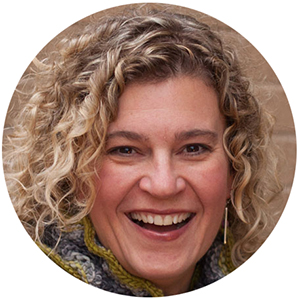
When anyone starts a new entrepreneurial venture, they generally believe they are starting a business. And by the general definition they are. But as time goes on, reality might say they have just created their own job.
I want to be clear right from the start: whether you have a business or you’ve created a job for yourself, both options are awesome. Every day, you get to do the work you truly love, and someone is paying you for it. That’s great! One path is NOT inherently better than the other, but the key is to know which path you’re on.
Spot the Differences
The number one factor that identifies a business as separate from a job is that you can sell a business to another person. Think about it: if you ran a local coffee shop or bookstore, you could sell that shop to another person and they could keep making coffee or selling books. The business would go on even after you weren’t part of it any more. For this to happen, two key elements must be included within the business: tangible assets for which someone else is willing to pay money and some level of systems in place to keep the business strong (meaning profitable and effective), no matter who’s behind it.
On the other hand if your venture is really more of a job, there are different, but distinguishable characteristics. The two key indicators that you have built yourself a job are first, you contribute to the business in a unique way that is difficult to replicate in someone else and second, generally when you are not working, income is not being generated.
Choose Your Path
In most cases the entrepreneurial venture is really somewhere in between pure business or pure job. But having a clear understanding of both allows you to ask yourself: “Is this what I WANT to be doing?”
People often assume that creating a business is the “right” answer, but it is nowhere near that simple. In many cases creating a job requires minimal capital investment whereas building a business is often capital intensive. Jobs can be highly profitable and personally lucrative but when you retire, the job retires with you. Businesses usually require investment not only in product, but also in personnel. But that also means that at some point, you still earn income in the form of profit distributions without actually having to continue to invest time (or money).
Generally consultants, authors, self-employed designers, teachers, or service providers of any type lean more toward the job side of the scale. Manufacturers, distributors, wholesalers, and retailers usually reside on the business side of the scale. But the separation is far from absolute.
For example, if as a designer you are the major contributor to your brand and product, you may think your only option is the job route. However there are other options. Hire an apprentice. Teach that person your ways, and train them to do what you do. A well-known example of this is Coco Chanel. Although she is long gone, you can still buy handbags and clothing that reflect her unique style.
On the other side, most independent retail shop owners assume they have a business they can sell. However, on further investigation, what actually becomes apparent is they have inventory and possibly some additional assets to sell, but without consistent profit and well documented systems and procedures there really isn’t a viable business.
In some cases entrepreneurs create businesses of both types. For example, consider Abby Glassenberg and Kristin Link, the founders of Craft Industry Alliance (CIA). Abby’s initial business, While She Naps, and Kristin’s initial business, Sew Mama Sew, are each closer to the job end of the spectrum. Their personality, unique knowledge, and individual contribution were and continue to be a strong factor in their success. Does that mean that at the point they want to move on to something else they would have no option but to shut down the business? Absolutely not! But they would have to think about how they transition their personal touch to the next business owner in such a manner that the business value they have built remains with the business entity.
In almost complete contrast is the Craft Industry Alliance, Abby and Kristin’s joint venture. Where their combined insights, skills, and knowledge propelled the CIA to rapid success, their roles and participation could easily be transitioned to other people passionate about building community for professionals in the craft industry. All of this points to CIA being a business. So does this mean they automatically have a sellable business? Not necessarily! The answer is unknown until additional information is gathered about their documentation of systems, business assets, and financial stability and profitability.
The Next Step
If you want a job, and you have a job, you’re all set! Next time, we’ll talk about how to plan an exit strategy so that, when you’re ready to stop doing that job, you can still get something valuable out of it by selling your assets to someone else.
However, if you want to have a business, but you’ve realized you’re not there yet, it’s time to make some changes. The key to having a business you can sell is to make sure that it has a strong, solid foundation including tangible assets, documented systems, and processes that can be replicated by someone other than just you, and a business model that produces consistent income and profit. Unfortunately, there is no magic wand to make all of this come to pass. It will take time, focused effort, and probably a few mistakes along the way.
So build a business or create a job, which is the right answer? You are the only one that can answer that question for yourself. But understanding the difference and making a conscious decision about which direction to choose will undoubtedly make you more successful, whatever path you select.

Gwen Bortner
contributor
Leveraging her breadth of operational expertise, Gwen Bortner works with female entrepreneurs to design a business that aligns with their deepest desires. Gwen describes herself as an operational strategist. She works with owners to improve business operations and leverage goals effectively to create a business that meets each individual’s unique definition of success. Find out more at https://everydayeffectiveness.com/


Very good explanation! I discovered a few months ago that I just want a job – but I never knew what to call it or how to explain why I stopped all the intense business stuff and big plans I had to scale. This is a fantastic explanation. I just want to make beautiful things for nice people all day long…. it’s a relief to make the choice and see this article that says either choice – jobs or business – is respectable in the crafting community..
I also have a job and I am OK with it for the time being. I am not sure that I actually want a business, but I keep that thinking within all my calculations as I move forward with bigger goals and plans! So glad the insight was helpful.
I’m not sure the mentions of tangible assets are very useful.
It’s likely to be intangible assets that are very important for crafters and makers. For example, trademarks/tradenames, copyright in books, patterns, drawings etc are intangible assets. For crafters who work in 3D, perhaps design or other patents. All of these can be licensed or sold.
I’m also confused by the examples of businesses given – a coffee shop and a bookstore. I live in the CBD/downtown and I’m sure no coffee shops or bookstores near me own their buildings, so they have very few tangible assets – a coffee machine, tables, chairs, crockery, cutlery, some food supplies. The stove and kitchen are likely part of the building, as are the counter and display cabinets. A bookshop would own books, shelves, seats, cash register … not much else tangible. If you bought either of those businesses, you’d likely be buying mostly intangible things such as reputation, trade names, contracts with landlords and with supppliers etc. I agree that systems are really important and a purchaser would be very much looking to buy those.
I’m not disputing that people may want to create a job rather than a business and that’s a totally valid choice. I’m just confused by the way businesses are described.
I see what you are saying and apologize for any confusion. I probably should have further explained what I think of as tangible versus non-tangible assets. In the coffee shop example I was thinking of the leased space/licenses/contracts as part of the tangible assets of business. In the bookstore example, the inventory in books (usually) is by far the largest asset. If they have gone through the process of registering trademarks, tradenames, patents, or copyrights, those will definitely have some value. Those things sit on the balance sheet and would absolutely be considered tangible.
I didn’t focus on the intangible assets because in the craft/hobby industry the founder/owner often places a much higher value on them than they are actually worth. But the emotion that is often included with general brand, reputation and good will (which is what I really think of an non-tangible asset) rarely has any real value.
Thanks for raising the point, because if you were confused I am sure others were as well. Hopefully that helps clarify my thinking.
I’m nearing retirement and would love an article about selling my small craft business. I teach so I have lots of inventory, my email list, social media presence and my company name.
Hi Joan, We have two already that might be helpful: https://craftindustryalliance.org/tips-to-prepare-value-and-sell-your-craft-business/ and https://craftindustryalliance.org/close-business-without-anxiety-attack/
Although I own a small commercial refrigeration service business, and only craft for leisure, I found this article very beneficial. I could totally relate to your definitions of job and business. I am eager to read the next installment.
Diane this article was originally written 5 years ago, but if you look at the comment above Abby has added some additional articles that have been written since that will also be valuable. As you noted, even though your business is not specifically craft focused, most solid business advice can be applied to a much broader audience and I appreciate that you found it useful.